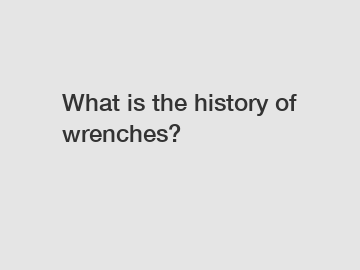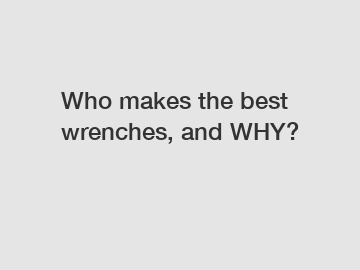The history of making paint brushes
Sep. 09, 2024
The history of making paint brushes
The history of making paint brushes
If you are looking for more details, kindly visit our website.
Art has been a part of human life for thousands of years. It is therefore no surprise that the brush is one of mankind's oldest tools. Artist brushes, similar to today's brushes were already used by man in the stone-age. Brushes as we know them today are made of natural or synthetic hair. The history and development of brush-making is long. The materials used and the brushes shapes changed over time and got more and more specialized.
The first artist brushes
Humans used brushes for cave paintings as far back as the Stone Age. The created work of art can be admired until today. The paintings in the cave of Altamira in Spain, are one of the most famous examples. They were created between 16,500 and 13,000 before Christ. Even then, people already knew different painting techniques and knew how to draw in perspective. Their aim was to depict the appearance and behaviour of animals in a lifelike manner. Therefore, these works can already be explicitly referred to as painting in today's understanding. For the application of paint, the first brushes were used in addition to hands, branches and tubes. The oldest brushes that have been found, were made of feathers and animal hair tied to branches and animal hair stuck into hollow bones.
The evolution of brush shapes
Arts and cultures have changed a lot over time. Accordingly, the most important tool used by artists has also changed and evolved. The brush as we know it today has helped shape centuries of human history and culture. Today there is hardly a person who has never held a brush in their hand.
In ancient times, brushes were almost used worldwide. In China, brushes were developed early on for writing the complex characters. Characteristic for these writing brushes was their long hair. The history of this kind of artist brush can be traced back at least 6,000 years. Until today, brushes of this type are still used for writing and calligraphy. The Egyptians use frayed papyrus for drawing, painting and decorating their palaces, temples and tombs. There are written records from the Greeks and Romans that precisely describe how to make brushes.
The production of brushes was further developed in the Middle Ages. At that time, brushes were produced by monks in monasteries.
In the 15th century, brushes were preferably made of animal hair and quills. Soft hair or bristles were inserted into the quills. Due to the natural shape of the quills, these brushes could only be round. Their shape would accompany the art world for hundreds of years.
Until the end of the 17th century, brushes were made by artists and their apprentices themselves. The profession of the brush maker was finally established in the 18th century. Since then the painter's most important tool, the brush, has been made by them. It was the brush makers who would experiment with different materials for and finally invented the metal ferrule. Thus, the round brush was joined by flat brushes and other special shapes. This also enabled the art world to further develop in its variety.
Round brushes and flat brushes still represent the basic shape of brushes today. Other special shapes are always based on round and flat brushes. They are being used depending on the painting technique or the color to achieve the most diverse effects.
Hair types being used for brush-making
As different as the shapes of the brushes are, as different are the materials that are being used for them. The type of the natural hair is always based on the area of application, the colors and the surfaces.
Hog bristle has been one of the first hairs that have been used for brush production because of its characteristics. Until today it is one of the most commonly used hairs. It is extremely resistant and durable. Brushes made with hog bristle have a remarkable ability to absorb paint. This is because of the unique structure of the bristle. Other natural hair types used for brush-making come from squirrels (squirrel hair), badgers, horses, oxen, goats and other animals. Besides natural hair, more and more synthetic hair is being used to produce brushes. Among the best synthetic materials are Toray and KONEX. However, the highest quality artist brushes are still made of red sable hair. The hair from the tail of the Siberian Kolinsky sable is the most valuable one. It has wonderful painting qualities and is extremely durable. Thus it gives you as an artist a very long-lasting joy in painting.
The profession of the brush maker
The profession of the brush maker goes back to the 18th century. The region around Bechhofen in Middle Franconia (Germany) can be referred to as the European centre of the brush making. Over centuries the craftmanship of brush making has further been developed and know-how has been accumulating brush makers in this region. Important values are tradition and a high quality standard.
The only vocational school for brush makers and the German Brush Museum are also located in Bechhofen. The museum is home to a unique collection of brushes and it's dedicated to their history and the evolution of brush making. Unique in Europe!
What is quite interesting in times of digitalization and automation is that the best brushes are still made by hand. This already makes the brush itself a true masterpiece.
Spread your passion for art!
Cohwa supply professional and honest service.
Related links:Revolutionizing Industry: DIY Rubber Coating Trends?
What is the best pattern for rolling paint?
Are Wall Texture Rollers the New Paintbrushes?
8 Creative Wall Paint Patterns Using a Roller: Transform Your Space Now!
Mastering the Art of Water-based Paint Spraying
Revolutionize Your Walls with Smart Paint Brushes: How?
Mastering Fence Painting with a Spray Gun
The Evolution Of The Paint Brush
The Evolution of the Paint Brush: From Ancient Beginnings to Modern Masterpieces
The paint brush, a seemingly simple tool that has been instrumental in the creation of countless masterpieces, holds a rich and fascinating history spanning thousands of years. From ancient civilizations to modern times, the paint brush has evolved and adapted, leaving an indelible mark on the world of art. Let's delve into its captivating journey, exploring the various materials used by different civilizations, its evolution over the years, and the world's most expensive paint brushes.
Ancient Beginnings: The Birth of the Brush
The origins of the paint brush can be traced back to ancient civilizations, where artists sought to express their creativity using readily available materials. One of the earliest examples of a paint brush comes from ancient China, around BCE. Chinese artists used bamboo sticks with animal hair tied at the end, giving birth to the earliest form of the brush we recognize today.
In ancient Egypt, artists employed a different approach by crafting paint brushes using reeds or thin twigs. These rudimentary tools allowed them to create vibrant, colourful murals and paintings on papyrus and tomb walls, showcasing the early versatility and importance of the paint brush in visual expression.
Diverse Materials: Brushes across Civilizations
As civilizations developed, so did their methods for creating paint brushes. In ancient Rome, brushes were fashioned from animal hair, typically from horses or hogs. Meanwhile, in Japan, brushes were crafted using delicate and precise techniques, utilizing materials such as squirrel, goat, or weasel hair.
In the Islamic Golden Age, the art of miniature painting flourished, and artists used brushes made from the finest hair of various animals, including sable, mongoose, and camel. These brushes were incredibly thin and allowed artists to produce intricate, detailed works of art.
Evolution over the Years: From Function to Form
Throughout the Middle Ages and Renaissance, the paint brush continued to evolve, with artists refining its design to suit their specific needs. Brush handles became more ergonomic, allowing for better control and comfort during long painting sessions. During this period, brushes with finer tips emerged, enabling artists to produce finer lines and details in their artwork.
The industrial revolution in the 18th and 19th centuries brought advancements in brush manufacturing. Mass production techniques allowed for more consistent and affordable brushes, making them accessible to a broader range of artists. Synthetic fibers were also developed, offering alternatives to natural animal hairs and addressing ethical concerns.
Do you know: Mr. Adams, an engineer, industrialist and civic leader, held the first patent on the paint roller. He developed it in his basement workshop in while working for the Sherwin-Williams Paint Company. The invention was insipred by a shortage of paint brushes caused by World War II.
Whether you're painting a masterpiece, a wall or a piece of furniture, a good quality paintbrush is a necessary tool.
The World's Most Expensive Paint Brushes
In the contemporary era, some paint brushes have achieved an exalted status, becoming collector's items or symbols of prestige. One of the most expensive paint brushes in the world is the 'Kolinsky Sable' brush. Made from the tail hairs of the Siberian weasel, these brushes are renowned for their exceptional quality and durability. However, concerns about the ethical sourcing of these hairs have led to increased interest in synthetic alternatives.
A Timeless Tool of Artistic Expression
The paint brush has come a long way from its humble origins in ancient civilizations to the present day. From bamboo sticks and animal hair to synthetic fibers, the brush has adapted to the changing needs and values of each era. Its evolution is a testament to the timeless nature of artistic expression and the remarkable ingenuity of human creativity.
As technology advances, new tools may emerge to complement traditional painting techniques, but the paint brush will always hold a special place in the heart of artists and art enthusiasts alike. Its ability to bring imagination to life on canvas is an enduring testament to the power of human expression through the ages. Whether it's a delicate brushstroke in an ancient manuscript, a bold splash of colour in a contemporary painting or the perfect brush to coat your walls the paint brush remains an indispensable companion in the journey of artistic creation.
Want more information on Paint Brush Manufacturer? Feel free to contact us.
Revolutionizing Home Renovation: The Paint Roller Phenomenon"Has the paint roller changed the game?
Transform Your Space: Changing Wood Furniture Color
Top Fence Sprayers Compared: Which One Should You Buy?
SK Tools still made in USA?
4 Tips on Choosing the Best Paint Sprayer for Your Fence
Everything You Need To Know To Find The Best PTFE lined tanks
Brush vs. Roller: Which Is Best for Wall Paint?
121
0
0
Related Articles
-
154
0
0
-
118
0
0
-
121
0
0
-
108
0
0
-
119
0
0
-
151
0
0
-
133
0
0
-
93
0
0









Comments
All Comments (0)